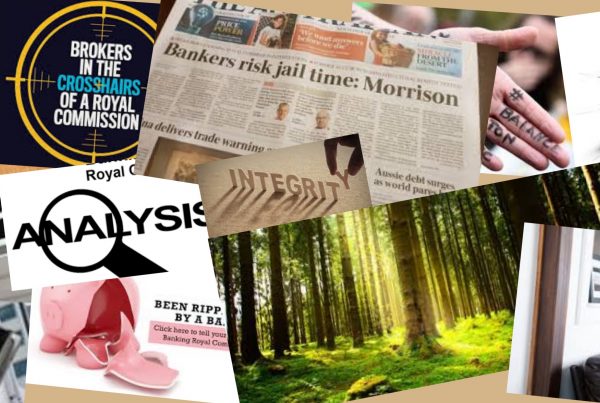A CEO has asked me how to best communicate something complex like a company’s strategic plan, or a tricky issue, to employees. Communicating sensitive or complex problems is a tough task.

1. A speech to all staff or to each division, accompanied by a PowerPoint presentation – the most common option; but while speeches/PP presentations can inspire momentarily, they are quickly forgotten;
2. A newsletter or booklet – you can follow the speech with either of these to all staff, but it is terribly remote; the advantage is it contains more detail, but who’s going to read it? Newsletters are notorious for having a low ‘opening rate’.
3. A blog – now we are getting closer; a blog is an ongoing communication (weekly, twice monthly). With a blog, staff can be enrolled in a conversation that goes on all year round, 300-600 words at a time. Now the Plan and your enthusiasm for it can come alive, bit by bit. Better still, blogs are interactive, to a degree, so you can seek and receive staff feedback and comments. A thought: why just make it to staff; why not put it out there and promote the organisation to your wider community?
4. Twitter, or an internal email (if you want to limit it to staff) is a handy addition to a blog, to pepper the week with gems of information that show the strategic plan in action. For instance, “Steve Smith has enrolled 8 clients to receive special programs this week, well done Steve. Part of our strategic plan aims at a 5% annual growth rate of client service programs.”
5. Video blogs – are going to increasingly be a part of every boss’s repertoire, whether delivered as a monologue to camera, or as an interview. Why now? Because the equipment is becoming cheaper and cheaper (a reasonable low-end camera for $100, edit software for under $100).
Below are 20 blogging ideas for a boss – you – to communicate to the company’s staff. Some of the ideas have been taken from a LinkedIn discussion:
LinkedIn discussion:
- Tell stories of real life activities that illustrate parts of your Strategic Plan. The Plan can be housed in a separate blog, or on the web site.
- Include the CEO’s vision. What are your goals for the year? For the next five years? From time to time, tie in news stories/current events (business, global economy, politics, even pop culture) with the CEO’s message.
- Connect to organisational values. If one value is integrity, write a CEO message about how a deal was walked away from because it wasn’t a fit.
- Recognise deserving employees and how their work relates to company goals. Politicians use this technique to great effect. Notice that when they are talking about a policy or economic struggles, they introduce their audience to a constituent who represents the point they are trying to make.
- What are your employees concerned about or interested in? You can be responding to the issues that are keeping employees up at night and making them excited to come to work. It’s all about the readers, not the writer. It’s an opportunity to connect and engage.
- What impact does recent legislation have on the company?
- Asking employees for their thoughts on what they’d like to hear can lead to some good ideas. If they suggest potentially negative and/or sensitive issues, it can provide a good way to breathe fresh air into the topic and create further credibility for you.
- Talk about something that is fresh and happening/ link to business strategy/ link to an employee example of strategy in action – so tell a story/ link to what other employees can now do to take action in their own role. Close with food for thought and get the discussion going.
- Any discussion about your likes and dislikes, favourite hobbies, favourite movies is usually a hit with employees. They like to know their CEO is “human.” One CEO wrote about a new camera that he got and how he was learning to use it, and that blog got a lot of engagement.
- Consider what a CEO ought to be concerned with. Acknowledge cultural/religious holidays e.g. Easter, Christmas, etc. Construct a (flexible) sort of editorial calendar:
- January – strategic and competitive outlook for the year.
- Easter – perhaps something about corporate culture or values.
- July – mid year holiday; value of balancing work and personal life.
- August – importance of developing people, ongoing learning.
- December – year-end message with appropriate exhortations or congratulations.
- Consider including an “interview” with a different member of the team; or you can spotlight the background & contributions of that staff member. Single out individuals who have done well – e.g. if a project was successful, you can thank the team leader and the team. That way your employees know you are hearing their views (even if you disagree). This also has the advantage of being more authentic.
- News about what you have been doing in the last week. Who did you meet with? Where did you travel? What keeps you awake at night?
- Share some information about your family .e.g. you have just spent time with the kids on holiday and are glad to be back in the office (where people listen to you).
- What is your organisation’s CSR mandate. Do you walk the talk? Share your charitable endeavours – i.e. school activities, scouting, working for the homeless food van, etc. – with a reflection on why you do it and why’s it’s important.
- You might want to think about discussing a recent event in the news and how it ties in to one of your organisation’s core values or how it can be a teachable moment. Maybe something a competitor has experienced and/or done that has received negative attention and how it’s an important lesson for everyone in your organisation.
- Inviting a guest columnist – another senior executive – in to address some matter of particular institutional importance, or even a director on a governance issue, etc.
- Video messages. The video messages can be posted and pushed right to the employees’ desktop and mobile devices.
- Make it interactive – add a survey link at the end or encourage comments on a blog or via email reply.
- Ask a question to stimulate conversation. So for example, if the topic is quality, ask “what are the top three quality issues that you are working on this year?” and then link it to the boss’s blog.
- Perhaps a strategic and meaningful message for the summer. You could work in the value of balancing work and life — how that makes us better able to serve our clients. And compare what was done on your vacation to what is done in the business world, like: PLANNING: I prepared for the trip by considering all options. NETWORKING: The family and I met with some former neighbours who have relocated back to their home from overseas. MANAGING FINANCES: We enjoyed the cost-effective and relaxing option of train travel. etc.
Next: Writing a Blog #4: Your Blog as a Hub, to Spread Your Word
Other reading:





